Many of you have observed that my training has ramped up significantly over the last 6 months. And indeed, it has – albeit, I didn’t entirely set out to race this particular race. Instead, my wife had upped her training for some longer distance events, and it seemed a logical way to join her on some training rides/runs/swims. Add to that, I was curious how things would work out if I picked a random training plan and (mostly) stuck with it. In my case, since I was already paying for TrainerRoad, I used one of their half-iron distance plans. But more on that in another post. I only signed up for this race about two months ago.
I picked AIX mostly because it fit my life schedule. Or rather, our family’s life schedule. There was a slate of events for work and otherwise, that I was trying to avoid. This particular race managed to thread the needle. I’ve been to Aix-en-Provence before, and the course would seemingly suit me well. At least if it wasn’t a hot day. If it was a hot day, I’d be hosed.
In any case, it’s been a while since I’ve done a race report (full section here). Or at least, a longer event race report. I’ve also forgotten to write up many race reports over the last few years, so honestly you missed a bunch of races I never wrote about. Sorry ‘bout that. But hey, I did get race reports done for the cargo bike race, and that running race I did with a double-stroller!
This time I set a goal of Wednesday after the race to have it published. And thus, somehow, here we are.
Oh – and for those not familiar, an Ironman 70.3 (half-iron) race consists of: 1.2 mile swim, 56 mile bike ride, and a 13.1 mile run (1.9km/90km/21km). With that, let’s dive into it.
Pre-Race:
Ironman AIX 70.3 is a point-to-point race. This means that you start in one place, but finish in another place. As such, you have multiple transition areas, and a reasonably increased level of complexity getting all your equipment pieces staged to the right spots. In this case, the swim (and bike start) was about a 30-minute drive from town, whereas the bike section would end in-town, and then run loops around the city. Aside from the swim starting area, all the main events would happen in town.
First though, is packet pickup – which occurred in town. As was the theme for my stay there – it was dumping out when I swung by Friday evening:
Packet pickup itself was pretty efficient, with just one person in front of me in my line. It’s cool how the printers they have on-site print out your entire race package on-demand. Bib, stickers for your bike/helmet/bags/etc… All instantly.
Next to that was a place to sign the athlete’s board, so obviously, I did that:
And of course, nearby was the giant merchandise store. It’s been a while since I’ve done an Ironman-branded event, and I’d forgotten just how big the whole merchandise thing was. After managing not to purchase anything, I headed back to the hotel and got my bike and gear ready for Saturday’s bike drop-off (race was Sunday). The backpack came as part of your registration.
For that, I’d drive out to the lake where the swim was starting. I got my bike out and did a short 20-25 minute ride out along the first few kilometers of the course. This was mainly just to ensure my bike was working well.
There was some drama because I didn’t bring my race bib with me, but did have my bike stickered/helmet/etc… The bike drop-off page included with the stickers was crystal clear on what you needed to drop off your bike – and bib was actually not on the list. A ref/official tried to argue otherwise – rejecting my entry to the bike drop-off.
Sure, you’d need it the next day for the race – but not explicitly for bike drop-off the day prior. A number of other athletes were also arguing this point – and eventually, a group of us prevailed. Given we had non-removable wristbands with our numbers, numbered stickers on our bikes, numbers on our helmets, IDs, and everything else – the entire dispute was a silly power play by one ref. One that wasn’t supported by Ironman’s own documents/rules printed in four languages on the sheet. The rest of the refs were also confused as to why this one ref was defying logic (and the printed rules on the back of the sticker sheet).
Look, on the whole, virtually everyone at Ironman AIX was great. But this one ref/individual put up a really big fight telling us we all now had to go all the way back to the city and come back again (realistically a 90-minute round-trip effort at best). Amidst this argument I started thinking: ‘Would this ref now take it out on us the next day mid-race?’
As the Ironman announcer unrelatedly teased the next morning during a pep talk “…and you even pay to do this!” A bunch of us left transition that afternoon starting our weekend with an unnecessary bad taste in our mouth – for an event ‘we paid to do’. I also wonder how many others were turned away, lacking the required argumentative experience that may or may not come with living in France.
Eventually, the other refs took our numbers down as long as we promised to double-check with them in the morning that we had brought our race bibs. See…easy! No need for drama. Thanks to those refs for the prevailing common sense (and just following the stated/written rules).
With the drama done, I dropped off my bike for the night:
I didn’t bother with covering my seat or anything like that. Frankly, it was slated to rain for the next 24 hours – so it’d be wet either way.
From there, I swung over and hung up my T1 transition bag. This would have my cycling shoes and helmet in it, and eventually my race bib. During the transition from swim to bike, I’d stick my wetsuit/goggles/swim cap in it, for them to eventually take back to town. As you can see above/below, I was pretty early in the drop-off time window, just wanting to get it all done.
With that – I wrapped up my time at the site and headed back to town. It’s here I’d walk over and drop off my Run transition bag. This is the bag that’d have my running shoes in it, as well as run nutrition. In my case, I put a pair of socks in this bag. While I can run without socks, for longer distances I prefer the socks, and they take all of 2-4 seconds to put on. Given it’d be dumping out, putting them in my run bag would hopefully keep them dry (versus using them on the bike guarantees them wet). I figured perhaps the rain would stop for the run (nope).
Finally, logistics complete!
This is one of those things that just come with the territory of multi-point races. But it’s something to keep in mind that it does add many hours of day-before bouncing around. A few hours for the trip to the lake-start, another 45 or so minutes for the run bag drop-off, etc.
Race Morning:
At 4:40AM, I walked to the shuttle busses. In the rain, because of course, it’s still raining out. Props to the organizers here – this was super efficient. I waited in line perhaps 10-15 minutes, but given they had to move what I’m guessing is a few thousand people (since spectators could also use busses a bit later) – they did a good job here.
The busses arrived at the lake site about 25-30 minutes later, and into transition I went:
At this point it’s mostly just a case of ensuring all my nutrition is organized properly, as well as my tires have enough air, etc. Oh, and mixed in that whole scene, I went off and found the (friendly) ref to show I had my race bib. I never saw the unfriendly individual again.
After that, I put on my wetsuit and headed over to the lake side, dropping my street clothes bag off (along with my phone).
While the rain was ever-present, the temps were not bad at all, perhaps 60°F/16°C for the air temp.
The Swim:
The swim is held in the above lake, which had a claimed water temperature of 19°C/66°F – and that seemed right. The race uses a wave-start methodology, based on self-selected swim finish time. This is meant to reduce panic associated with mass swim starts (though, unfortunately, one participant did actually die during the swim portion of this year’s race).
In my case, I found a spot in the 33-34ish minute range, which seemed about right (my swim time would be a few seconds over 35 mins).
As you approached the start banner, it was like boarding a ski lift. They had six ‘channels’/lines, and you filtered into one of the six channels (you can see the fences below creating the channels, if you look at people’s feet). Then every eight seconds a beeper would beep, and the volunteers would signal to go – opening their arms to let you through. You’d cross the timing mat and your race would begin. Frankly, it worked incredibly well.
You can see me above just after entering the water 2nd to the right (the wetsuit with the slight tear in it). I was now realizing that the small rocks actually kinda hurt. Thankfully, that only lasted a moment, and off I swam:
My goal/plan for the swim was silly simple: Go silly easy.
While I enjoy openwater swimming quite a bit – it’s just not my strongest sport. It’s never been. Likewise, I skewed my training very heavily towards bike/run, rather than swim. Having done triathlons for nearly 15 years, my swim base is enough that sure, I could invest a massive amount of training into the swim – and shift the needle perhaps a minute or two. Or, I can invest that time into run/bike, and move it a ton.
So, I just swam nice and chill. Zero rush. The swim wasn’t cluttered, and there were no issues swimming around people. In general, I passed more people than passed me.
I started climbing out of the water around the 34:55 marker, and then crossed the swim timing mats just after 35:00. From there, it was an 800m or so run to the transition areas.
Within transition, I ditched my wetsuit in the transition bag, and swapped into my cycling shoes, and put on my helmet. While for a sprint/Olympic distance race I’d probably have left the shoes clipped in, it wasn’t worth the hassle here – especially since it was still a rather long run from bike rack to bike mount line (which, in my experience gives more chance for your cycling shoes if pre-clipped, to catch on the pavement, or the rubber band holding the shoes to snap). I have no issues running in cleats.
Further, having pre-ridden the course the day before, I knew that the first kilometer was kinda chipped/bumpy roads, and I just wanted to be fully clipped in, and not dealing with trying to get into my cycling shoes while pedaling, amidst dumping rain, potholes, and pavement cracks.
The Bike:
Now at this point, I probably should mention something notable. Two weeks prior, I got sick, and as such, was carrying a fair amount of fatigue. While I felt fine in terms of being sick, I had been getting poor sleep the previous two weeks. Knowing this, I had severely cut back workouts in the last week to basically just a few minor ones. Obviously, at that point you’re into the taper, so there are no “gains” to be made, only to stop the bleeding from sleep/fatigue issues.
It’s a portion of why I purposefully swam extra easy. I wanted to save every bit of energy for the bike/run. Still, I knew things were gonna likely get ugly, so I went with a relatively conservative plan in relation to my training/fitness levels.
For the bike I had an average power target of about 80% of FTP, or roughly 250w. However, this course had a lot of steep descending, where the value would be zero. I toyed with Best Bike Split quite a bit, as well as data from INSYCD to come up with a good race plan. I’ll likely write up something more detailed on both, if there’s interest. The INSYCD data itself was super fascinating to look at, both for running and cycling. There’s a ton of huge/good me-specific takeaways there around nutrition/pacing that were moderately eye-opening (for someone that has habitually failed at nutrition).
Essentially I used recent test data from INSYCD to figure out a nutrition and pacing plan that was conservative and viable, and then fed that into Best Bike Split to see how that’d align to both pacing and the exact wattages for the different segments of the course. I didn’t get fancy with my exact tri bike details like CRR and CDA, and just kept it stock. What this couldn’t account for though was rain and bad pass/descending conditions.
This plan would be easier than most of my recent easy hilly rides in places like Mallorca and Gran Canaria. Thus, I felt pretty good with the plan. I then tried to mirror that in Garmin’s Power Guide feature, which I loaded into the Edge 840.
For a brief geekery aside here, Best Bike Split has the ability to export our workouts to the Garmin devices in various formats. You can either create a structured workout, or you can create a ‘power course’, which roughly puts waypoints of specific power values tied to a given GPS coordinate. Both work, but neither are as clean as Garmin’s own “Power Guide” feature they introduced a year ago.
Except Garmin’s Power Guide feature can’t (still/yet) be leveraged by 3rd parties. And it’s not customizable like Best Bike Split. You just move a slider, and call it done for the full course. Whereas BBS has tons of customization. When Garmin launched the feature, they talked about the idea of letting 3rd parties leverage it – since it’s just consuming a .FIT file with instructions in it. Sadly, that hasn’t happened yet – I really hope Garmin can find a way to let BBS and others leverage it – cause Power Guide as a structure is super cool.
In any case, I actually loaded both. I used the Best Bike Split power course as the base/foundation for Garmin’s Power Guide. This gave me both values concurrently. The Power Guide is better because it’s less noisy, easier to refer to your current progress against goal. Whereas the BBS values are a bit more precise.
Anyways, point being – off I went.
For the first hour, I was pretty much spot-on target. Mostly during this time you’re gradually climbing. I was taking in nutrition as planned (really for the first time ever in a race, I was doing all my nutrition). This was about 90g of carbs per hour, along with roughly 1 bottle of water per hour. Maybe a touch under that, simple because it wasn’t hot out (it was cool and dumping). But consuming just fine.
Around the 90-minute marker though, things slowly started to fall apart. First, there was the beginnings of the mountains. The descents were sharp, steep, and bodies were strewn everywhere. Given the rains, time trial/triathlon bikes, and often 180° switchbacks – triathletes misjudged many corners – ending up on the slick pavement, off in the ditch, or into the woods. Or, all three at once. With three athletes at once. I saw it all.
While I managed to stay upright, that came at a severe time penalty. My trusty old rim-brake-equipped Cervelo P3C is perfectly fine in this kind of weather. I’ve descended many French mountains passes over the last decade with it, including in the rain. Sure, disc brakes would have been nice – but also perhaps added overconfidence and resulted in faceplanting the pavement.
However, what I hadn’t fully reconciled was that my brake pads and tire tread was perfectly suitable for everyday rainy Amsterdam conditions. But not at all suitable for steep, wet mountain roads. Both probably needed replacing, and as a result, the rear brakes, in particular, offered far less braking power than I’d have preferred on the steeper sections. Again, perhaps it was a blessing – it forced me to go slow. But I got passed by basically everyone, including the rivers of water going down the slopes.
Further, I just simply didn’t have the confidence to descend fast enough on my tri bike in these conditions – even in straighter sections. Many others did. Had I been on my road bike, I’d have been far more confident.
However, while I made it out of the first major descent section, an unexpected level of exhaustion was rising. This wasn’t a nutrition bonk, but more of a “I just want to go to sleep now”. I only managed to get 3 hours of sleep the night before, atop the previous weeks of poor sleep. And it was all catching up with me. My power just started dropping off a cliff. I switched over to a backup gel I had with caffeine, but even sometime later it didn’t help. I was being passed not just by all of this year’s competitors, but probably also by all of next year’s competitors.
The final insult to injury came on the last major climb. Except, it shouldn’t have been major. I’d been doing climb after major climb the last few months in Spain and elsewhere on various trips – with far steeper terrain. This was a measly 6% average gradient. But my energy was zero, and it’s around now that I realized I didn’t have the right gearing for it. Not even close. I was well past out of gears and suffering at horribly low cadences – at one point in the 50RPM range. My legs felt fine, but my body said no.
Finally reaching the top, I still just wanted to sleep. But instead, I had to descend the last 10-15KM back to town. Here’s me doing that:
I was deflated. Defeated. And pretty mentally broken. I was now about 25-30 minutes behind my planned race split for the bike – with almost all of that time lost in the previous 90 minutes. Sure, some of that was unavoidable for everyone due to poor weather. But most of that time loss was just due to the debt of two weeks of exhaustion.
However, I do want to give a quick shout-out to Michael. I don’t know your last name Michael, but you know who you are. At this point, as I slowly descended in the rain, you cruised by and recognized me, and gave some words of encouragement. I was pretty much on the verge of tears, and I appreciated it. Thanks man!
In short, the lessons learned from the bike were:
A) No amount of training or nutrition can overcome pre-race exhaustion
B) I should have changed out the rear tire for better tread, and the rear brakes
C) Having spent more time recently descending on my TT bike in wet mountain conditions would have been helpful
D) For once I managed to get all my nutrition/hydration in
Heck, I saw people with gravel bikes out there – which, given the conditions and just the right tires, might have worked better. Where there’s a will, there’s a way!
I rolled into transition in 2:54. Not ideal, but still in one piece and without road rash.
The Run:
In transition, I took my time. For the first time ever, I took a second to try and mentally reset. I got my dry socks on, dry running shoes on, grabbed my nutrition, and briefly visited the lineup of bathrooms there. To foreshadow something later, and to give TMI – I peed a normal color. Again, I had managed to take in nutrition and hydration properly. Woot!
(Some photos later on of the bike to run transition area)
Of course, now it was time to run a half-marathon. The course is 3 loops around a twisty/turny and rolling route of the city.
My original race plan called for the first loop to hang out in the 4:30-4:40/km range (7:25-7:30/mile). Most days, this would be a very easy pace for me, and should be easily achievable in this race setting. This is essentially my normal long-run easy pace, where I run 25-30KM usually. And at first, that kinda worked. I was kinda chugging along. I’m the one in the orange shoes.
But whatever reprieve my body got from 25 or so minutes of easy-pedaling the descent, soon vanished. I was again ready to curl up in the mud and go to sleep.
I roughly cut a deal with myself to briefly walk every other aid station to get in hydration/nutrition (which I did), in exchange for running. My pace slowed down to about a 4:50-5:10/km (7:50-8:15/mile), depending on the portion of the course. It wasn’t ideal, but it was at least consistent. I did actually take a small cup of water at almost every aide station, and sometimes a sip of Coke too.
The only bright spot of the continued rain, is it saved me from the heat. Heat is my arch-nemesis. And given there was none of that, I didn’t overheat. So that was positive. Also positive were the crowds. Despite the rain, there were tons of people out cheering as spectators.
Ultimately, this would be one of the slowest half-marathon times I’ve run in a long, long, long time. I crossed the line in 1:46 (run time). That’d be about 10-12 or so minutes behind my conservative race plan. Also, as seen below, there was congestion at the finish line – which was fine, because I wasn’t really in the mood to get a fancy photo.
But again, at least I crossed the line. Total time was 5:27:33.
The Finish:
After crossing the line I found some sort of beach-type chair nearby and just sat and closed my eyes. I didn’t fall asleep there, mainly because I didn’t want some medical person freaking out thinking I’d died in the chair or something.
So instead, I meandered to check out all the food options. Albeit, I wasn’t hungry at all. So I just looked.
Still, they had pasta, rice, pizza, crepes, waffles, beer, fruit, more fruit, and so much more:
It was a very impressive showing. I didn’t see Haribo, but they can be forgiven for that omission.
After that, I picked up my dry clothes back and half-changed. Also, at the finish line I got a finishers t-shirt and medal. Oh, and it decided to stop raining.
While exhausted, my legs felt perfectly fine.
However, it was a bathroom stop a short bit later that sidelined things.
Apparently, peeing red wine is frowned upon. Even here in wine region laden Aix-en-Provence. So while I felt physically fine (no pain/etc.), I knew that pee shouldn’t be red – so I swung over to the medic tent run by the Red Cross. They too, were not amused with my discovery.
Albeit, they were happy I wasn’t in some other sort of pain (and I was happy that, unlike everyone else in the medic tent, I was the only one without road rash from bike crashes).
But they didn’t want me to leave until I peed a half-normal color. About an hour later, I had upgraded from peeing red wine to peeing Coca-Cola. That was enough to indicate I was trending in the right direction, and they let me go. As long as I promised to keep peeing, and go to the hospital if it shifted back towards red. An hour after that I upgraded further to peeing darker iced tea. And then, finally, about 6 hours after the finish, I was back to normal.
They didn’t have a specific explanation for it, but said it can happen if you’re not taking enough fluids in. While normally that’s usually the case for me, this was the rare exception of actually being well-hydrated. I came off the bike peeing clean, and went into the run drinking a bit of water at almost every aide station. I wanted to pee immediately after the race too. And combined with the rainy weather, dehydration seems unlikely in my case. But hey, I’m not a doctor.
With that, I went about and picked up all my gear and packed it up. Just like with drop-off the day prior, it’s a bit of a scavenger hunt. Your dry clothes bag was at the finish line, but then you’ll grab your bike, run bag, and wetsuit bag over in transition (a different part of town). But I didn’t mind the walking – my legs felt perfectly fine. Sigh. I used the time to cheer some people on.
Overall while it was a great race production (as Ironman usually is), my times simply didn’t match the training I’ve put in over the last 6 months. The thing is: I actually really enjoy training – even at high volumes. It’s always been that relationship though between training for a single big event, where something like getting sick shortly before throws all of that out the window, that’s challenging for me. I don’t currently have any other races on the calendar. I’ve got a really busy June work-travel wise, and then a typically busy summer as well.
I could see perhaps a fall event somewhere, but nothing planned for the moment.
Still, every race is a learning experience – and there was plenty to learn from here. So no opportunity is wasted.
With that – thanks for reading!
FOUND THIS POST USEFUL? SUPPORT THE SITE!
Hopefully, you found this post useful. The website is really a labor of love, so please consider becoming a DC RAINMAKER Supporter. This gets you an ad-free experience, and access to our (mostly) bi-monthly behind-the-scenes video series of “Shed Talkin’”.
Support DCRainMaker - Shop on Amazon
Otherwise, perhaps consider using the below link if shopping on Amazon. As an Amazon Associate, I earn from qualifying purchases. It doesn’t cost you anything extra, but your purchases help support this website a lot. It could simply be buying toilet paper, or this pizza oven we use and love.


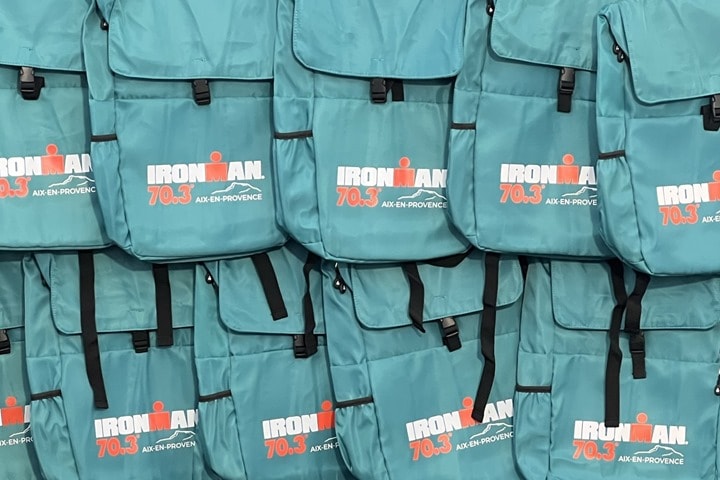
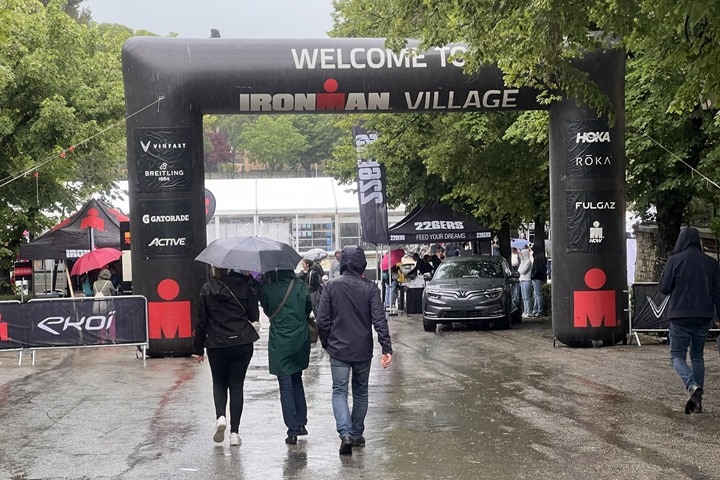
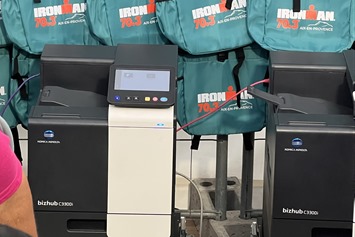
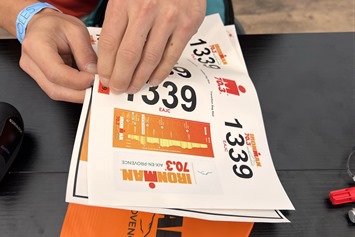
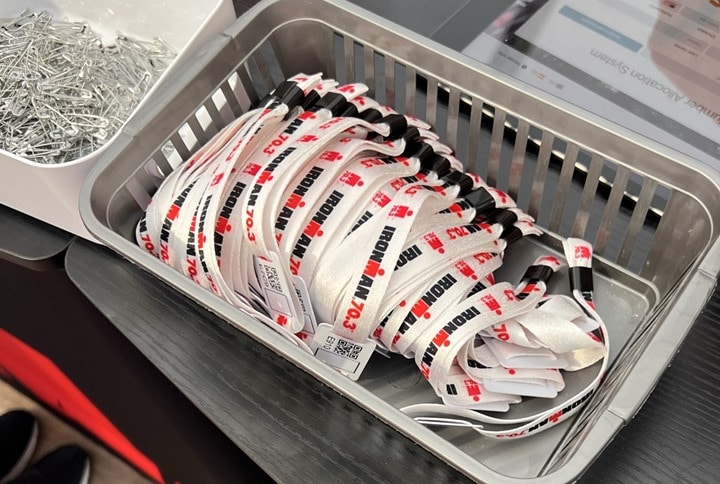
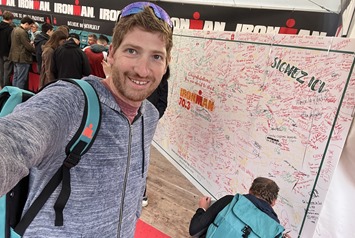


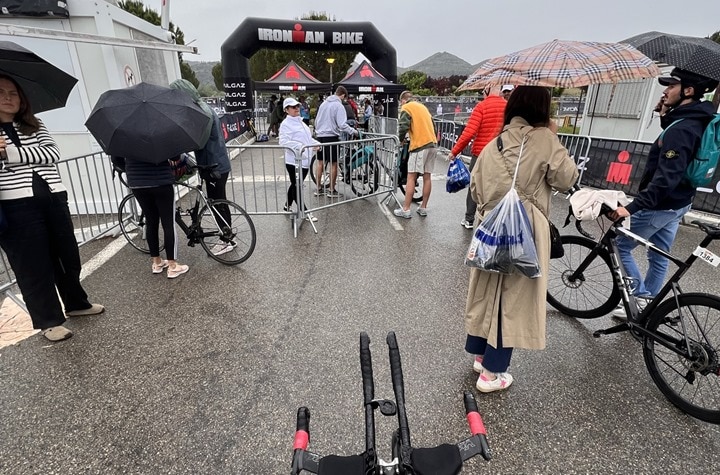
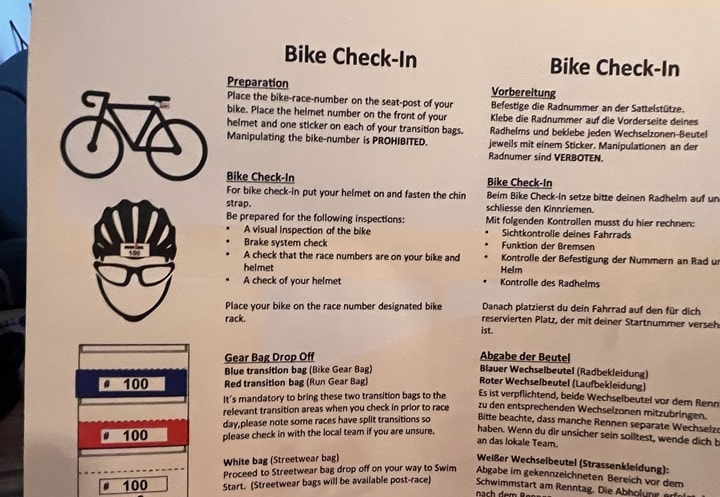

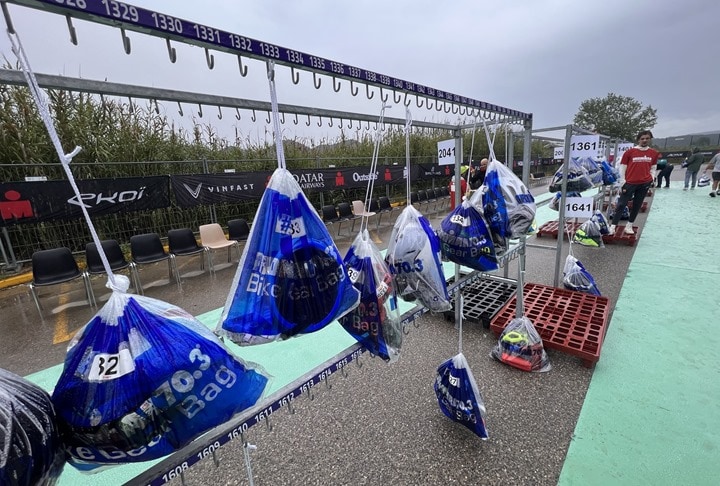
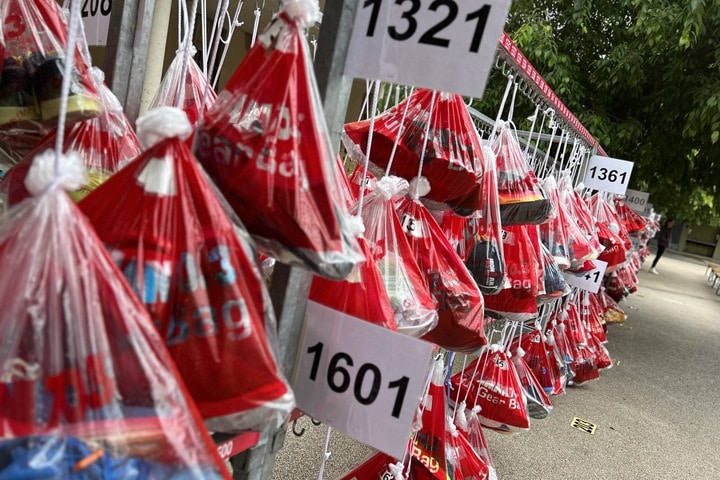


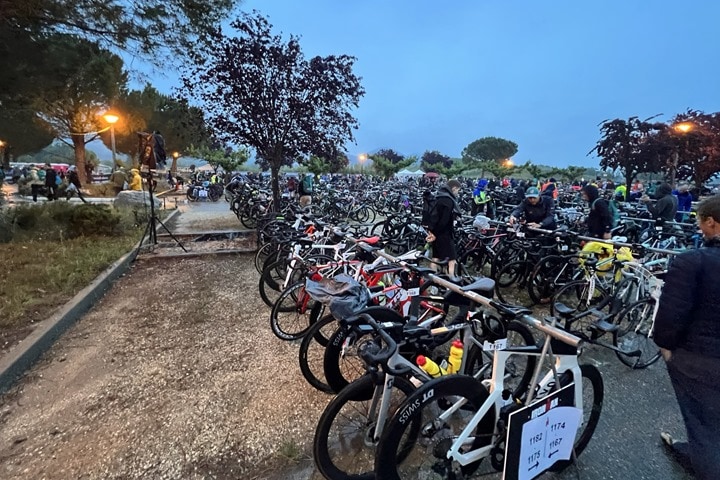

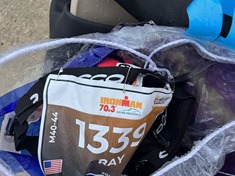
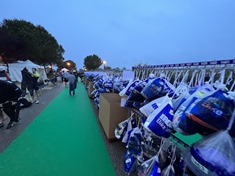
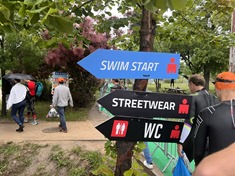
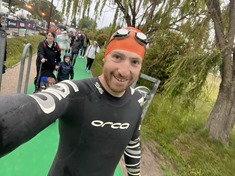

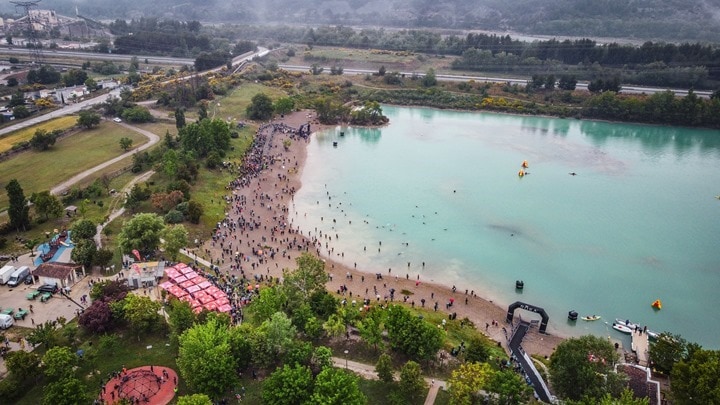
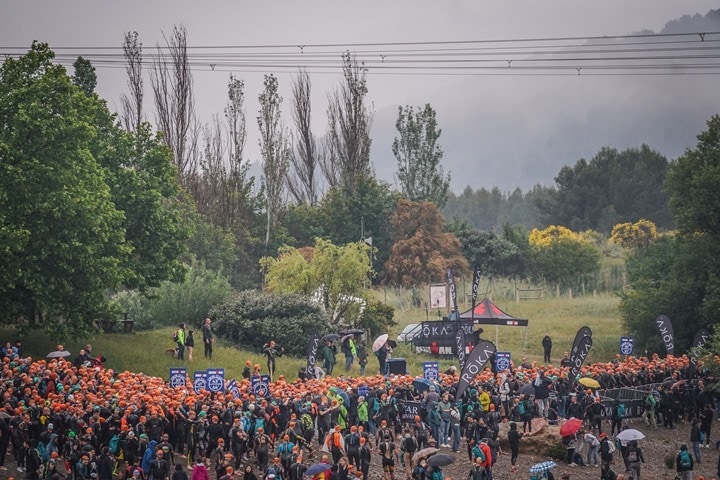
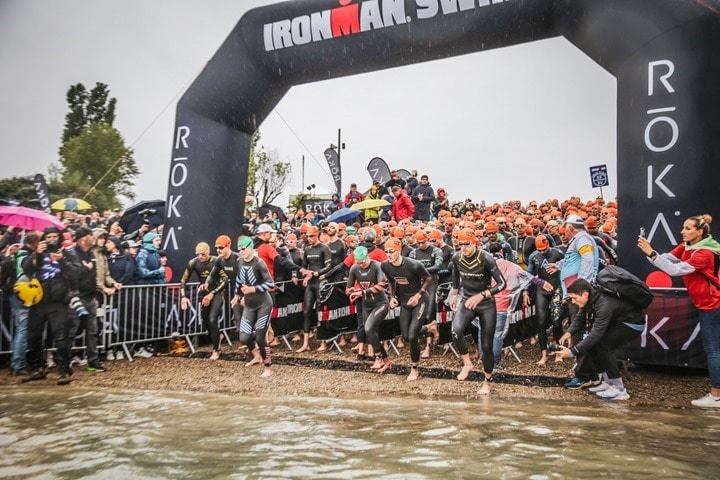

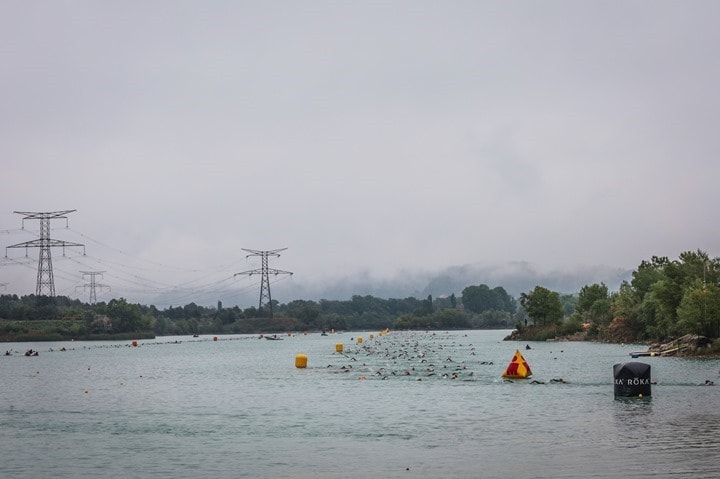
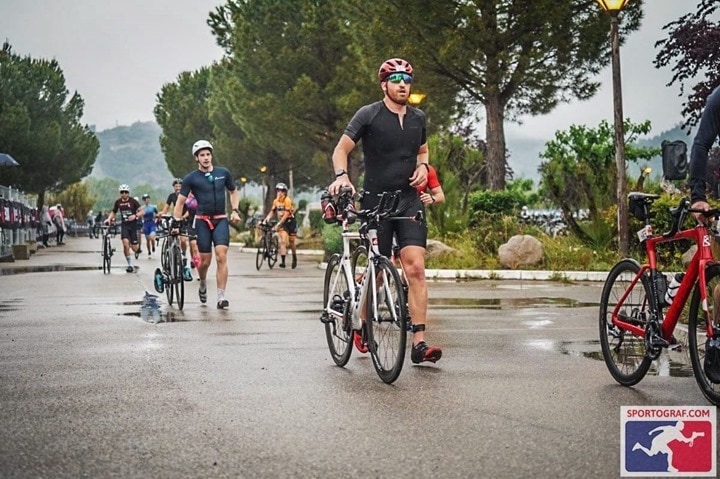

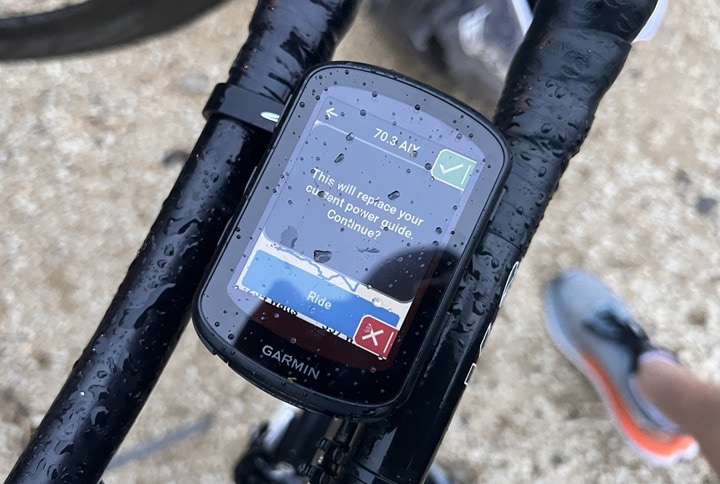

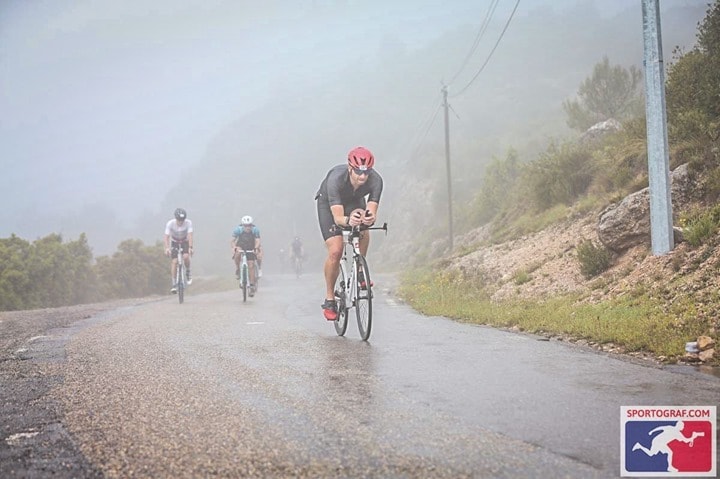
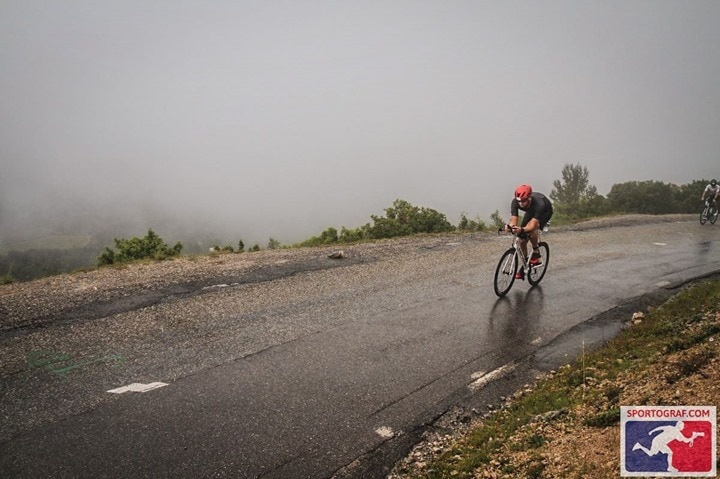
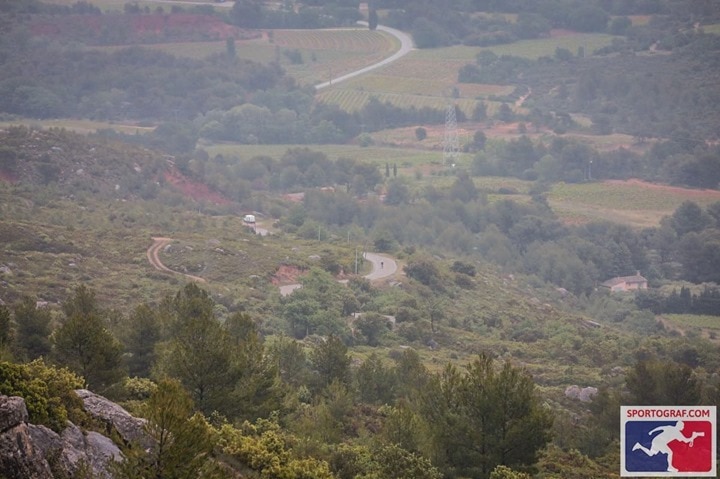
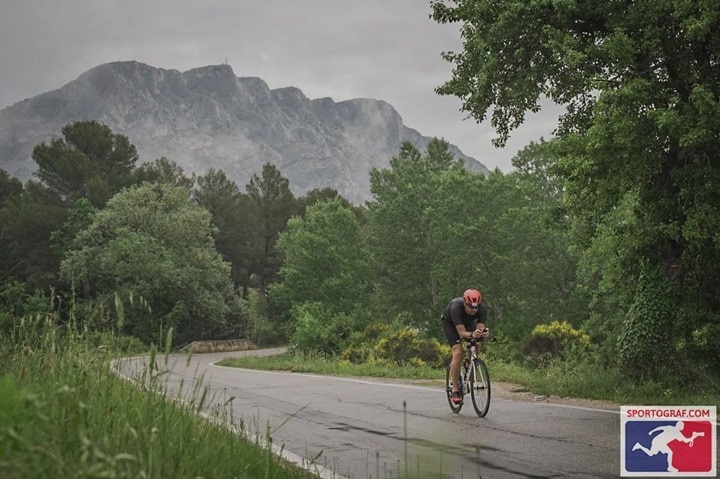
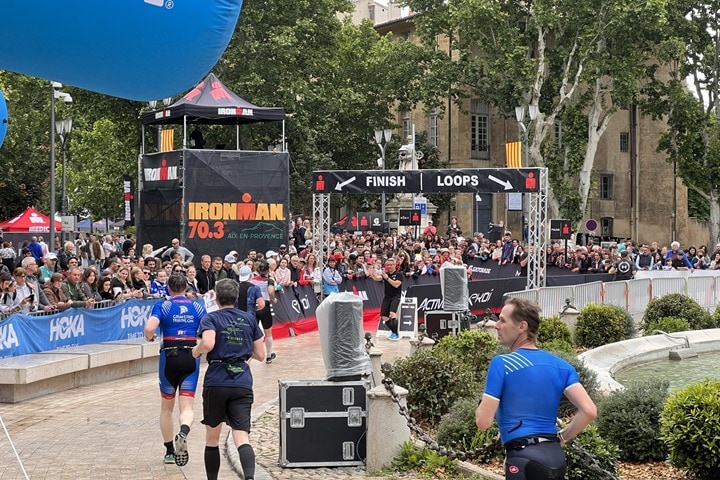

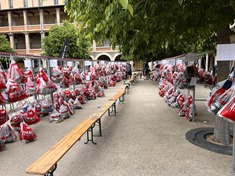

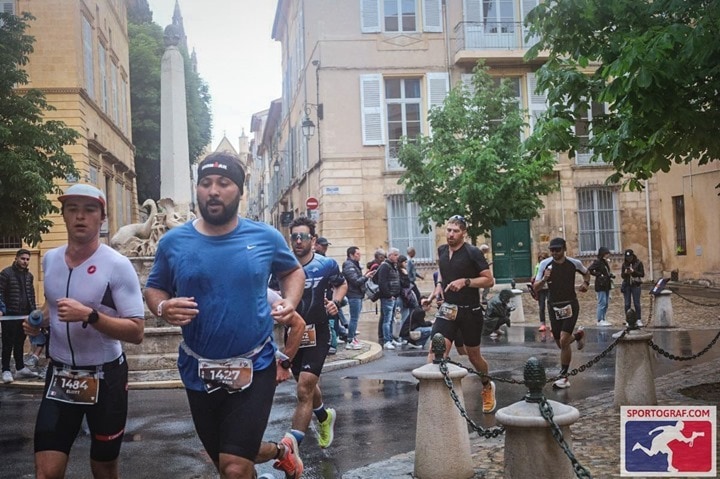
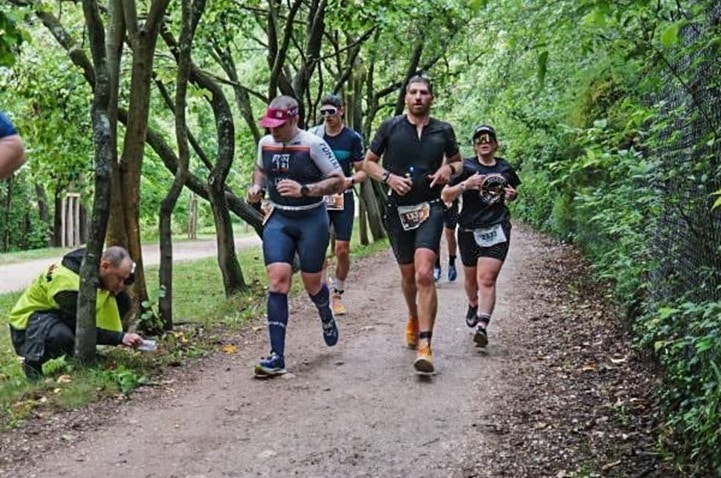
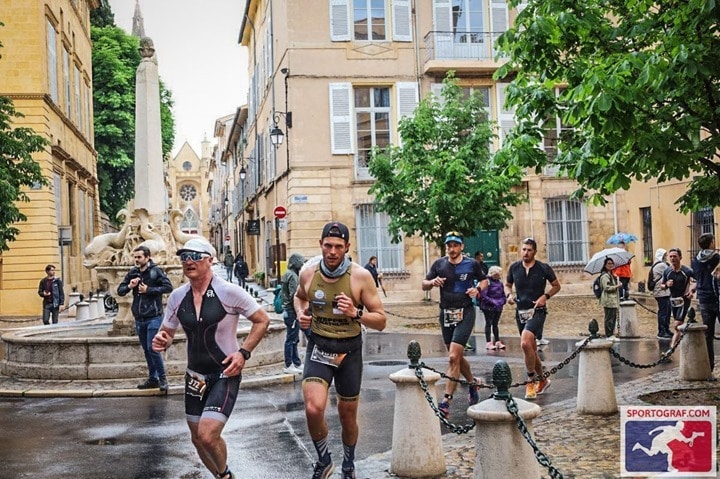

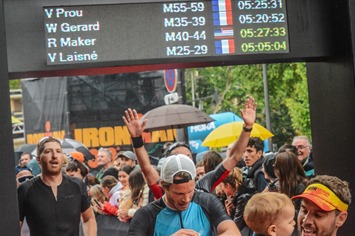

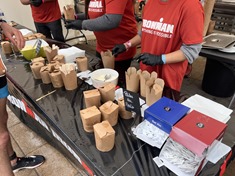
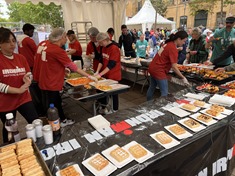
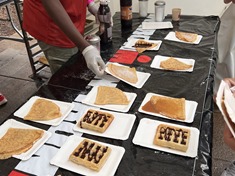
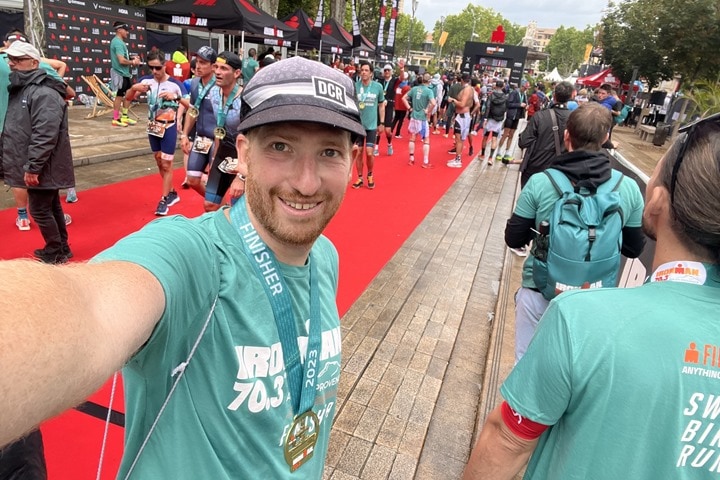

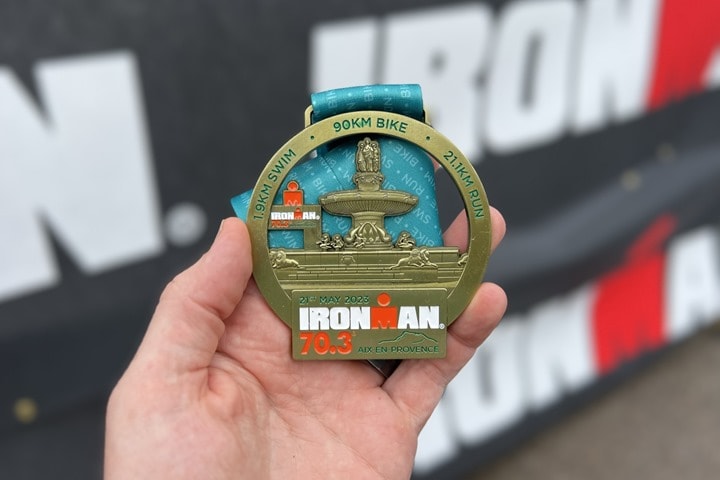
















Sounds like you probably had a mild case of exertional rhabdomyoelisis. Not so much from racing “hard” but because it became a hard day with the baseline fatigue going into it. Sorry for the challenging day
Yes – I am far from a medical expert and my knowledge of rhabdo is limited to what I have heard/read about from people far more knowledgeable from me but the take home point I always had is blood in urine = unhappy kidneys which in an endurance sport context could be rhabdo.
But then, it sounds like you were a bit shot to bits and still had some underlying viral adjacent fatigue coming into the race so perhaps the extra exertion of race day just pushed everything over the edge kidneys included.
Great job making it to the finish – but be careful over the next week or so – if you read into rhabdo its scary s**t.
Yes it was rhabdomyeltis. The red isnt blood though. It’s myoglobin from muscle breakdown. Although in my experience of severe rhabdo it’s usually a chocolate sauce colour rather than red wine.
I never want to piss chocolate sauce.
Great job Ray thanks for writing up and well done! Epic!!
I’m curious. You mention the Garmin 830 for the bike but you appear to have two watches, a chest strap, and another strap on your ankle. What watchers were you using and what is the strap on your ankle? It appears to be a heart rate strap on your ankle.
On the ankle must be the timing chip strap
That makes sense.
That’s the ankle monitor for home arrest.
Now, in all seriousness, it’s the Ironman timing chip 😁
Congrats on making it to the finish line Ray!
It always sucks when after all the training you arrive a little bit sick to race day. I’ve gone through that several times…
But I always see the good part and, like you, I always find that at least I succeeded with nutrition.
Tough race for you but well done indeed. Aix is a lovely town as you know; I have this event on my to do list.
Nice writeup. Great courage in sharing a not all great experience. Good job dealing with inconvenience.
Good luck next time.
When I read your (planned) numbers of power and pace, I feel embarrassed 😅 Impressive time, especially since you didn’t have a good day!
Ray, we missed you racing so much, well done, please do more triathlons!
Great RR. You are much faster than me…even on a bad day you’re a little more than 30 minutes faster than me on a good one. 8) But I think we can all relate to being in that dark place mentally. Getting through it can be so hard sometimes.
I was racing Tulsa 70.3 this weekend and it was a blast! Finished in 6:23 which was slower than my goal but living in New Orleans, I didn’t really appreciate what 2,800 ft of climbing would actually feel like. It was my first half where I was able to run all the way to the finish though so I was smiling all the way.
I would LOVE an article about using Best Bike Split to plan a race. It’s really hard for me to go from flats where I can easily hit an average power goal to a rolling course and understand what my power should be.
Yes to this more on bike split would be awesome
When the official was giving you grief checking in, you should have used the “Don’t you know who I am!” technique. (Yeah, I’m pretty sure this would have worked LOL
Enjoyed your read and it’s those tough times that ultimately make us stronger.
Cheers,
Derek
Its curious to see famous blogger pointing next to your name on the participants board. Similar experience with bike check-in on Saturday. Technically it is not allowed to touch the blue bag on the race day before swim and therefore you have to bring bib number day before to put it in the bag. Silly rule, especially seeing nobody followed it. Due to rain and wet trisuit i struggled with hypothermia on descends and, yes, did crash on the last section in the steep hairpin with my Cervelo p5 rim brake. Nothing broken so finished bike and ran half marathon with fractured shoulder ligament. Tough sport. Good luck in next races!
Eeeks – sorry to hear that! Glad you were able to finish, though sucks about the shoulder situation. :-/
Good luck on the recovery!
Nice work Ray! Way to get it done on a hard day. 👌🏻
Thank you for the excellent race report and congrats for finishing (I bet you were far from last).
I always try to do 1-2 triathlons a year. Sprint or Olympic Distance only since I am mostly a runner and don’t have much time to train on the bike, but I find it such a fun activity! Also funny is swimrun, you should try it if you enjoy open water swimming.
Do you use beet juice shots? They make my pee red for a while after a race.
No, I don’t believe I’ve ever had beet juice. :)
Congrats!! Great pre/post write up!
Congrats! Fu..ing weather for such an event! But only the strong survive (more or less).
Nice Race Ray but: “The only bright spot of the continued rain, is it saved me from the heat. Heat is my arch-nemesis.” Then why on earth do you pick a Tri in the far south of France in the end of May?!? It can be anything from 18 to 30 degrees Celsius in May.
Fair point, though historically speaking looking at a number of years of weather data – it does actually tend to be on the reasonable side. But, that was indeed a concern of mine as well.
My main limiter was frankly the date. I had/have a lot of other weekends already blocked in one way or another, and this was pretty much the only viable/open weekend (or weekend that didn’t involve messy travel the week prior, which could destroy pre-race recovery/taper).
And while I don’t tend to run great in hot weather, I do tend to bike fairly well (if not better) in warm/dry weather over wet/cold weather.
Well done! Glad you’re fine. Definitely a heck of a shock seeing red wine coming out when we’re used to it going in. 😉
You did very well in tough conditions. We’ve all done races when we think we’re going to do well and for what ever reason things don’t go to plan. Happens to the pros too, look what happened to Eluid in Boston last month. Rest up and take it easy.
Congratulations! it’s nice to see both of you back in the racing.
I love how you say that you were exhausted but still finish below 5:30 mark.
> At least if it wasn’t a hot day.
Be carefull what you wish for!
P.S. Looks like both Dutch IM 70.3s opted for the cheapest bags possible – the one from Aix looks way better.
Well done for getting through that Ray, tough day at the office. Any chance of a more in-depth piece/ guide on the Best Bike Split/ Power Guide method? This is something that really interests me (mainly to stop me getting carried away too early in the bike leg, happens every time…) I presume you can’t use extended display on the edge unit and have to fire it up independantly of your watch?
Best
Chris
Yup, I think I’ll write something up!
I’d have to poke more with extended display. Honestly, the last time I tried it a few years back in a triathlon race, it was just kinda a mess. This is one of those areas that Wahoo has figured out on their watch/bike computer. While all other aspects are behind Garmin there on the watch, for that one feature, it’s just so much better (alongside automatic transitions).
I used extended display and other than the limitations of 4 fields, it worked fine last weekend for me. What issues do you have?
bravo for hanging tight !
having gone through stress lately I have touch how much stress can impact training… it’s a big deal…
I am also interested in this BBS vs Garmin Power Plan stuff ’cause I plan to do a moutaneous tri in august and I thinkthis could help me tinker a bit my bike plan. Thanks !
(PS i reapeat myself but you should definitely try to go to Morzine in the summer, perfect place for family and tri training and gear testing ! plus they have a superb M triathlon at the end of august organized by an english speaking team of australian friends : Buzz Performance)
Garmin has improved in recent years. The main issue still is that the watch doesn’t find the bike computer at T1. But that happens less and less now. Also I wish they wouldn’t mandate the 2 fixed fields at the top and let you choose whatever the heck you want. I use it with my Fenix 6 and a 130. I like the size of the 130 but it doesn’t support Di2 but with extended display it can mirror the gears field on the F6 so it sorta does.
Wahoo’s implementation has never failed to connect when I’ve used a Bolt and a Rival.
Hey Ray,
Did you ever do a follow up on using best bike split along with power guide? Can’t get BBS to work on my 840 but would be interested to see how both could work together.
Quick question: I thought the Power Guide feature is for the x40 series – was it included/updated for the 830 as well (as written in the article), or even the 530?
Sadly good catch, typo – meant 840 not 830. Thanks!
Great job, Ray!
If I could only imagine that you are racing in Aix I would come to encourage you during the running part.
Those rains are so unusual for this time of the year in the region and are so demotivating for any activity. Did a 400km BRM around Aix last week with similar conditions…not so fun, not so fun.
The orange sneakers….those are not Asics Ds-Trainer anymore? Is it The End of an era of you using Ds-trainers for many years?
Ahh bummer on missing you!
Indeed, it is the end of the era for my Asics at this point. I did some testing of a bunch of different shoes from numerous brands, on a big electronic sensor plate, combined with how they felt/etc – and these along with another pair of Hoka’s came out as the winners. I’ve been running with them since early Feb, and love it.
Which Hokas are they?
As a two-thirds-DC person (i.e. I’m very unlikely to swim 😊) just wanted to say thanks so much for the very interesting write up, and I hope your recovery continues apace.
That comment about how hard you may train and try to get prepared for a specific event, and how easily things could be thrown out of the window…. I almost need to cry now <:..)
This is actually the case for any time in life when you have a "high spot" event of whatever sort. But for some uknown reason, in endurance sport that seems to be so much more true.
Yeah, I think it’s part of my hesitation in doing the half/full IM events.
I just hate knowing that 4-8 months of training can really come down to what you ate last night, or randomly catching a bug from kids school, etc… I know it’s no different than anything else big-ticket, but as you noted, the impact tends to be more profound on endurance sports than other areas.
And, recovering from that – or pushing through, I find tends to be more challenging for endurance sports athletes, because it’s a tough balance of losing fitness/gains/training versus recovery.
Hi Ray and blog readers,
I am desperately looking for a supporter for the running leg of Swissman…
If you are capable and willing to run a marathon and you have a free weekend from June 23-25, please text me at +421 905 396 989
(yes, a lot of things happened from registration till now and I end up alone)
Thx
Thanks for the honest report!
And congrats for battling through the challenges. You may have been behind your race plan, but hey: its about being the best version available on any given day. And it seems as if you have squeezed out every bit of energy, mental power and suffering that was available. You could be very proud!
Nice endurance Ray. Well done for making the finish. Achievement unlocked.
What a great write-up and huge respect for getting through it – absolute leg-end :-) Congratulations!!!
Thanks Ray!
I really enjoyed reading your race report.
Nice to read your honest report. However I will not congratulate you with pushing till the end. Blood in your pee is a dangerous situation. Don’t waste your health.
I’m not entirely clear how I was supposed to know that there was blood in my pee?
As noted, I peed during T2 (transition 2, after bike) – and it was fine. Going into the run, it was hard – but so is any other race. As noted, I fell into a pace that seemed viable. But having red wine pee is something that I’d never on a Bingo Card as possible outcomes of the run.
If the bar for when to stop is when things ‘feel hard’ for fear of an unknown thing that might or might not happen with no historical reason for it to happen, I don’t think there would be much competing in any sports by anyone.
Do you think this will put you off competing in similar events in the future?
Nice work. Next time better rec photos, please.
What are rec photos?
Great write up and sorry to hear it was a Sufferfest (of the wrong variety). I’m currently out in Kona for some scuba diving, and if you’re ever here for anything I highly recommend logging some underwater time – Kona Diving Company is a great outfit as well!
It is depressing when things don’t go to plan on race day. I was wondering why you didn’t have a couple of shorter races in the lead up for example an Olympic distance race 4 weeks before and a sprint 8 weeks before so then you weren’t putting all your training effort into a single race.
Thanks for the report – aligns with my own experience and I enjoyed reading it!
Glad to see you back to doing race reports. I have a score to settle with 70.3 Aix as my valve extender snapped on the morning of the race. That happened in 2014 and honestly you’ve inspired me correct that DNS.
Great job in tough conditions, Ray! Glad you recovered and made it through without crashing. Also still a very respectable time:)
Tough day out there and well done for getting to the finish. Sometimes it’s really hard to mentally cope when a random injury/illness gets in the way of delivering to your potential on a given day, but then at the same time that’s a bit of the point I think too. I say this as someone in best ever shape who managed to put my back out 10 days before IM in March 2020. Raced, finished, but the run was +2 hours over my target due to a stagger / lurch that then created injury that meant I’ve just completed my first race since- a club duathlon 3 weeks ago. Rest of time been endless physio and rehab.
Re the bib thing. Ray, I think you do a great job here, and I post this mainly to help others. The Race manual stated that teh bib needed to be in teh blue bag and you had to bring that to transition (link to cdn1.sportngin.com )
But more to the point is that after racking, those bags are counted, checked to make sure they are all in the right order and no-one comes out the swim to not be able to locate their kit. It shouldn’t happen, but with athletes accessing them on race morning there will be some that get moved, twisted, dropped off the pegs etc. So the reason for the rules is to prevent anyone’s race being accidentally impacted. I had challenges with this a few years back as I only had one set of orthotics at that time, and so had to work out how to check in the day before and not be crippled by race start, yet still have them in my run bag for the start.
That said, as anyone that has volunteered at an event would know (and remember, he would have been a volunteer) athletes in race week can get a little bit of red mist in terms of any barriers (literal or otherwise) that stops them doing what they need, and so calm solution focussed discussions are the needed approach. Sounds like you got there in the end, but unnecessary stress.
I was there that day – weather awful (mindful of Majorca 2017) and on carbon rim brakes I took those descents pretty easy too.
From a tech pov, I also used BBS with a planned IF of around 0.8-0.85, meaning a normalised of 215. BBS predicted me 2:37 and I came in on on 2:39 and 219NP, so I would take that as pretty much bang on. Really useful tool in reminding you (and showing you) how to do the ‘hard bits hard and the easy bits easy’ Run was a bit of a shock when it went off road through the park and up quite steep slippy incline! :-O
Well done getting through it all Ray.
Would be interesting with more info on INSYCS as well! Does your coach need to be a subscriber, or is it possible for a layman to get that info core oneself?
My understanding is your coach has to be a subscriber. I’m gonna get clarity on what their thinking is there.
In my case, they did it directly for me, acting as a coach (since my ‘coach’ is/was TrainerRoad). I can see how at the moment, the way their dashboard panels are constructed, it would be difficult for many people to interpret that data. For example, I can look at the panels and roughly understand bits of it, but they went through it all on a call like a coach would, and then ultimately sent me over a relatively straight-forward e-mail with bullets of “Do this on your race” for each section.
That ‘Do this’ part isn’t automated or part of the dashboard today, that’s what the coach is for. That said, I’d hope they’d get there.
Loved this write up! LOVED! From the planning to the race itself. Gets me pumped up to do an Ironman and secretly compete with you 😂. I checked out the INSYCD website and am very interested in your experience there. What drew you to it…the tests and the resulting datasets. Honestly surprised to hear about your previous nutrition woes and how INSYCD helped. You clearly have the skills to analyze and assess so what did it bring to the table? How did it close the loop so to speak? Thanks. Appreciate you.
“You clearly have the skills to analyze and assess so what did it bring to the table? How did it close the loop so to speak?”
I think the exactness of it. Meaning, the ability to see exactly what I can get away with, based on real-world data, and exactly when I’m going to crap-out if I don’t.
And perhaps, some of it being someone else doing the legwork on the nutrition components. I know a lot about tech, but less interest/care into figuring out exact burn rates of carbs and sugars and whatever else. So this made it clear-cut.
For example, having a rough idea of my glycogen reserve level, so I know roughly how much I need to balance taking in versus burning through that. Those are concrete numbers that I can be like “Ok, here’s how big the bank is, but I’ll run out of money at X point with Y burn rate.”, and then to see on a graph what varying power or pace levels do, and in some ways, your race plan is kinda built out for you based on incoming nutrition quantities and what you can stomach. It’s sorta fascinating.
Now, there’s a lot of bits that come out of that which are still over my head. But for the pieces I did consume, the specifics of the data was useful. I like non-ambiguity in certain areas, and this was cause/effect in that way.
Thank you. I can see how it would be helpful to have someone else show where the line should be drawn, from a personal burn rate perspective. I definitely feel the carb/fat gears shifting during a long run or a marathon, regardless of nutrition intake. Understanding the where and why would be super helpful to navigate it. My upcoming Ironman will be interesting.
Great read as always!
Perhaps a bit off topic but I wonder how you record a triathlon activity. Just simple multisport on a watch or separate recordings for the disciplines?
I am also registered this years Aix en Provence race (first time triathlon, haha), have an fr 265 and 530 edge. I would prefer to use my edge for the ride but then I dont think I can link the powermeter to 2 devices..
Thanks
Mark